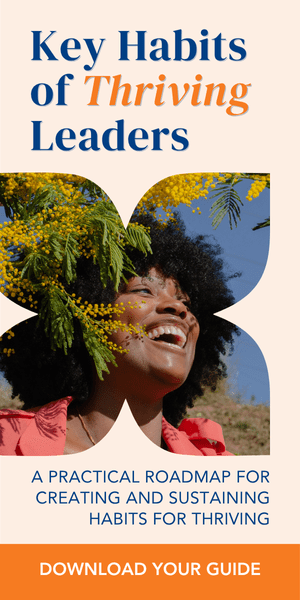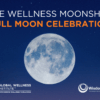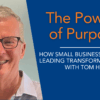We all got these big ideas.
One day they’re replaced with fears.
How did we get here?Darlin’, don’t quit your daydream.
It’s your life that you’re making.
It ain’t big enough if it doesn’t scare the hell out of you.If it makes you nervous,
it’s probably worth it.
Why save it for sleep when you could be living your daydream?
Lily Meola’s song Daydream (quoted above) beautifully captures how we diminish our lives and work when we disconnect with our ability to imagine. She reminds us we come alive when we reconnect with our inborn creative power.
I used to be in a tug of war with my creativity. For the sake of that ever-important “to-do” list, early in my career it was easy to dismiss the inspirations bubbling up within me. Yet, I’ve learned that creativity is not only a natural wellspring of wellbeing, when put to constructive use, it’s also an expression of the best of our individual and collective ingenuity.
Just look around you: In large and small ways, people are applying their creativity to accomplish the improbable and extraordinary every day. Today, I tune in to my creative impulses and encourage others to do the same. I like to pay particular attention to the creative flows that feel like they are emerging through us, rather than from us, such as when flashes of insight recur in a conversation or new sensemaking arises when we’re exploring a challenge.
My personal experience is that life provides more room for creativity to bloom as I age. Sadly, our cultural narratives suggest that with age, creativity declines.
WE MISTAKENLY THINK CREATIVITY IS RESERVED FOR THE YOUNG
Our workteams today comprise five generations: Gen Z, Millennial, Generation X, Baby Boomers, and the Silent Generation. In this diverse, intergenerational mix, it’s time to let go of our long held biases when it comes to creativity and age. Research shows we judge the creativity of older generations as less than that of younger ones, even with creative acts of our elders right in front of us. In this respect, we are blinded by our ageism, frequently without awareness, and as a result, we fail to capitalize on the very resourcefulness and wisdom that diverse ages in our teams can offer.
If, like me, you’re older than most people you work with, then you may be contributing to this problem. When we internalize the cultural memes promoting that age means creative lack, we likely censor our own ideas before they’ve have a chance to bud. And we miss out on a source of vitalilty with others and within ourselves.
New research emphasizes what I hope you’ll fully hear: Creativity is independent of age. You have the same chance of making big (or little) discoveries later in life as in your younger years.
“A society that has lost touch with its creative side is an imprisoned society.”—National Youth Council of Ireland
CURIOSITY FUELS CREATIVITY
As psychologists and neuroscientists explore the processes that foster creativity, they find its top predictor is openness to new experiences. Anna Abraham, PhD, Director of the Torrance Center for Creativity and Talent Development at the University of Georgia says it best, “Creative people have the kind of curiosity that draws them toward learning new things and experiencing the world in new ways.”
At Wisdom Works, we capture this kind of experiencing the world in the Wonder dimension of our science-based leadership assessment Be Well Lead Well Pulse®. This dimension measures the extent to which people bring a sense of awe and appreciation to their lives and work, seek perspectives that differ from their own, and use their personal and professional circumstances to learn and grow as a leader and whole person.
We’ve found leaders who score high in Wonder are more apt to report high engagement, mindfulness, and self-esteem at work (factors in the assessment’s Flow dimension), a greater ability to maximize the potentials of others and cultivate a positive work environment (factors in the assessment’s Thriving Amplified dimension), and higher overall wellbeing and stress resilience.
Simply put: Creativity can be a potent doorway to a better leadership and a richer life.
MAKING CREATIVITY PRODUCTIVE AT WORK
Creativity is a hardwired inner resource every person possesses. In our long list of amazing human powers, I think of creativity as an integrative capacity, a bringing together of what’s often thought of as masculine energies (i.e., focus, boldness, ambition) and feminine energies (receptivity, intuition, care) into new insights and innovations.
You’ve been drawing on this resource your whole life to, among many things, solve problems, build relationships, and achieve meaningful goals.
Yet, there’s always room for growth.
Creativity plummets when people explicitly or tacitly receive the message: Your ideas don’t matter. In teams driven by efficiency alone or operating in destructive environments (think: discriminatory, burnt out, hostile), creativity is inevitably squelched.
Creativity thrives in a culture of openmindedness and experimentation, where new thinking and ideas have the space to be nurtured and flourish. Making creativity productive is, in fact, a mark of a thriving work culture.
To enhance creativity within yourself and your team, try out these approaches:
- Shake up the normal.Invite employees and colleagues to break up their work routines by walking outdoors. Support the little known power of daydreaming and mind-wandering. Give your team permission to forget being serious, at least for a moment, and bring humor into a meeting. Shaking things up is not only refreshing to mind and body; it also stimulates our creative energy.
- Make creativity part of work.Structure sessions for shared reflection and collaborative ideation into the team calendar. Convene brain trusts where team members push each other’s concepts to new heights. Allow people the autonomy to bring their creative juices to their work decisions. Invite your team to genuinely ask, “What else could be true?” to broaden everyone’s perspectives about a problem. Hire and reward curiosity. Fostering a culture of creativity empowers vibrancy and adaptability at work.
- Make creativity a priority personally.Connecting with nature, artistic pursuits, and traveling have long been known to reduce stress and boost creativity. What experiences bring out the creative within you? Write down your list, then identify how you’ll make creativity a conscious practice every year, every month, and, better yet, every single day.
By making creativity productive, you can tap into the imagination within people on your team no matter what generation—and open new avenues for innovation, performance, and wellbeing.
“If you want creative workers, give them enough time to play.” – John Cleese
CREATIVITY: FOR THE SAKE OF WHAT?
Our creativity can be used for harm or benefit. I believe it’s time to consciously use our creative capacities as an expression of love for ourselves, each other, and the planet.
As we lead ourselves and others through disruptions happening at every level of our world, my hope is that we activate creativity toward a higher purpose that everyone, no matter what age, may realize their capacity to thrive.






